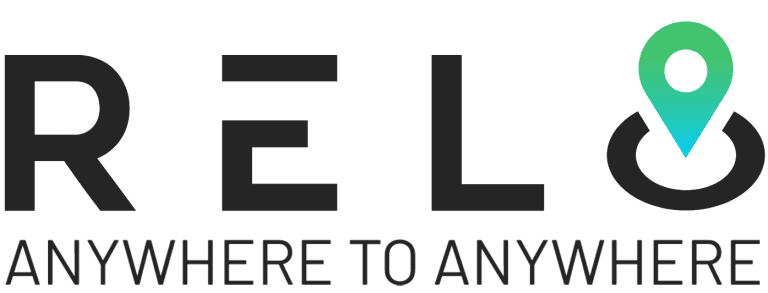Planning and saving for retirement is crucial to financial well-being and effective retirement planning. It ensures a secure and comfortable future when you no longer have a regular income. With increasing life expectancy and changing economic landscapes, it has become even more important to have a well-thought-out retirement plan in place. Effective retirement planning involves considering various factors such as your desired retirement age, expected lifestyle during retirement, and the amount of income you will need to maintain that lifestyle. It also requires understanding the different retirement savings account types and investment options available to you.
the guide will discuss strategies for maximizing your retirement savings, including the importance of starting early, contributing regularly, and taking advantage of employer matching programs. It will also cover tax considerations, withdrawal rules, and potential penalties associated with different retirement accounts.
Traditional Individual Retirement Accounts (IRAs)

Traditional Individual Retirement Accounts (IRAs) are a widely chosen retirement savings option due to their tax advantages and flexibility. Understanding the critical aspects of Traditional IRAs will help you make informed findings when planning your retirement. Here’s an expanded overview of the points to consider:
-
Eligibility requirements
One of the significant advantages of Traditional IRAs is their accessibility. Anyone with earned earnings can contribute to a traditional IRA, regardless of whether they participate in an employer-sponsored retirement plan. It makes Traditional IRAs an excellent option for individuals who may not have access to other retirement savings plans.
-
Contribution limits
The Internal Revenue Service (IRS) sets the annual maximum contribution limit for Traditional IRAs. It’s crucial to stay updated with the current limitations to maximize your savings potential. For example, suppose you are under 50 years old. In that case, the 2021 and 2022 contribution limit is $6,000 per year, while individuals aged 50 and older can make an added catch-up contribution of $1,000, bringing their total limit to $7,000 per year. By contributing the maximum amount allowed, you can take full advantage of the tax benefits and maximize your retirement savings.
-
Tax advantages:
Traditional IRAs offer tax advantages that can help your savings grow.
Contributions to Traditional IRAs are tax-deductible, reducing your taxable income for the year you make the contributions. You put $5,000 into your Traditional IRA, and your annual taxable income is $50,000. By doing this, your taxable income will decrease to $45,000, which means you can get an upfront tax deduction and enjoy immediate financial benefits.
-
Withdrawal rules and penalties:
While Traditional IRAs, one of the retirement savings account types, provide tax benefits when contributing, withdrawals during retirement are subject to income tax. Knowing the withdrawal rules is essential to avoid penalties or unexpected tax liabilities. Withdrawals from Traditional IRAs before reaching the age of 59½ may be subject to a 10% premature withdrawal penalty in addition to regular income tax. However, there are exceptions to this penalty, such as using the funds for certain qualified expenses like higher education costs or first-time home purchases. It’s critical to consult with a financial advisor or tax professional to comprehend your situation’s specific rules and implications regarding Retirement Savings Account Types.
-
Required minimum distributions (RMDs)
Traditional IRAs are required to begin taking withdrawals, called Required Minimum Distributions (RMDs), once you reach the age of 72. The amount of the RMD is calculated based on your age, account balance, and life longing. Failing to take the required withdrawals may result in substantial penalties. Planning and investing in these RMDs is essential when considering Traditional IRAs as part of your retirement savings strategy.
-
Pros and cons
Traditional IRAs offer several advantages, such as upfront tax deductions and potential tax-deferred growth, allowing your savings to grow more quickly. They are also relatively easy to open and maintain. However, it’s essential to evaluate the tax implications during retirement carefully. While contributions to Traditional IRAs provide immediate tax benefits, withdrawals are subject to income tax, potentially affecting your retirement income and tax bracket. Evaluating your current and future tax situation and retirement goals will help determine if a Traditional IRA is the right choice among various retirement savings account types.
Roth Individual Retirement Accounts (IRAs)
Roth IRAs are another popular retirement savings option. They have distinct features compared to traditional IRAs:
- Eligibility requirements: Roth IRAs have income limitations for eligibility. However, there are ways to contribute indirectly through a backdoor Roth IRA.
- Contribution limits: Like traditional IRAs, Roth IRAs have annual contribution limits set by the IRS. Stay informed about the current limits.
- Tax advantages: Contributions to Roth IRAs are made with after-tax income, meaning they don’t provide immediate tax deductions. However, qualified withdrawals during retirement are tax-free.
- Withdrawal rules and penalties: You can withdraw contributions to a Roth IRA without incurring taxes or corrections at any time. However, starting earnings after you turn 59½ will also be tax-free if you’ve had the account for at least five years.
- Pros and cons: Roth IRAs offer tax-free withdrawals in retirement and greater flexibility, but they don’t provide immediate tax benefits.
Employer-Sponsored Retirement Plans

Many employers offer retirement plans to their employees. Here are some common types to consider:
401(k) plans are retirement plans sponsored by employers that enable employees to save a portion of their salary for retirement. Key points to consider include:
-
- How 401(k) plans work: A 401(k) plan is a retirement savings plan sponsored by an employer. Employees can contribute a portion of their salary to the plan, and the money is invested in various investment options. The money in a 401(k) plan grows tax-deferred, which means you do not pay taxes on the investment earnings until you withdraw the money in retirement.
-
- Employer-matching contributions: One of the significant advantages of certain retirement savings account types, including Traditional IRAs, is the potential for employer-matching contributions. Many employers offer matching contributions as an additional incentive for employees to save for retirement.
- Employer-matching contributions: One of the significant advantages of certain retirement savings account types, including Traditional IRAs, is the potential for employer-matching contributions. Many employers offer matching contributions as an additional incentive for employees to save for retirement.
-
- Contribution limits and tax advantages: The contribution limit for 401(k) plans in 2023 is $22,500. The contribution limit for IRAs in 2023 is $6,500. Contributions to 401(k) plans are made with pre-tax income, which reduces your current taxable income. Withdrawals from 401(k) plans are taxed as ordinary income in retirement. Contributions to IRAs can be made with pre-tax or post-tax income. Withdrawals from traditional IRAs are taxed as ordinary income in retirement. Withdrawals from Roth IRAs are tax-free.
-
- Vesting and withdrawal rules: Employer contributions may be subject to a vesting schedule. Withdrawals before age 59½ may incur taxes and penalties unless certain exceptions apply.
- Pros and cons: 401(k) plans offer substantial contribution limits, employer matching, and tax advantages. However, early withdrawals may have penalties and investment options are limited to those provided by the plan.
403(b) Plans:
If you work for a public school, college, or specific non-profit organization, you may have access to a retirement savings plan called a 403(b). It is an important addition when discussing retirement savings account types. Like a 401(k) plan, a 403(b) plan allows employees to contribute a fragment of their salary toward retirement savings.
- Overview of 403(b) plans: With a 403(b) plan, employees can contribute a portion of their salary to the plan on a pre-tax basis. This means the money is deducted from their paycheck before taxes are calculated. The money in a 403(b) plan grows tax-deferred, which means that taxes are not paid on the investment earnings until the money is withdrawn in retirement.
- Similarities and differences compared to 401(k) plan: 403(b) plans have similar contribution limits, tax advantages, and withdrawal rules. However, they may have special provisions based on the employer’s status.
- Pros and cons: 403(b) plans offer retirement benefits to educational institutions and non-profit employees, but it’s essential to understand any variations in plan rules and investment options.
Simplified Employee Pension (SEP) IRA:

Employers can benefit from tax deductions by contributing to SEP IRAs on their business tax returns, resulting in substantial savings, particularly for companies with a sizable workforce. SEP IRAs also provide employees with valuable retirement savings opportunities, fostering loyalty and productivity. With a secure retirement plan, employees are less inclined to seek other job opportunities, reducing turnover rates and saving employers on recruitment and training expenses.
Eligibility requirements: Employees must meet certain eligibility criteria to participate in a SEP IRA.
They must be at least 21 years old, have worked for the employer for at least three of the past five years, and earned a minimum of $550 in the previous year. If these requirements are met, the employee becomes eligible for SEP IRA participation, and the employer must contribute to their account.
There are exceptions to these criteria, such as self-employed individuals who can participate in a SEP IRA without fulfilling the three-year work requirement and temporarily disabled employees who can join a SEP IRA even if they don’t meet the earned income requirement.
Tax advantages and withdrawal rules:
Simplified Employee Pension IRAs, are tax-deferred retirement accounts that enable employers to make pre-tax contributions on behalf of their employees. These contributions are tax-deductible for employers and grow tax-deferred until retirement. SEP IRAs provide various tax advantages, including the ability for employers to deduct contributions on their business taxes and the potential for continued tax-deferred growth when inherited by beneficiaries.
Withdrawals from SEP IRAs are subject to ordinary income tax, but individuals can avoid early withdrawal penalties after reaching age 59 ½. Contribution limits for SEP IRAs in 2023 are the lesser of 25% of an employee’s compensation or $61,000. Understanding these tax advantages, contribution limits, and withdrawal rules can help employers and employees maximize the benefits of SEP IRAs for retirement savings.
Pros and cons:
Pros of SEP IRAs include tax deductions, potential tax-deferred growth, and contribution flexibility for employers. They are also user-friendly, appealing to self-employed individuals and small businesses. However, cons to consider are the requirement for employers to contribute for all eligible employees and the potential impact on employees’ ability to contribute to their own traditional IRAs.
Early withdrawals from SEP IRAs may result in income tax liabilities and penalties. Careful evaluation of individual circumstances and long-term financial goals is crucial to determine if a SEP IRA is the right choice for retirement planning.
Health Savings Accounts (HSAs)

While not solely retirement savings account types, HSAs can serve as valuable tools for long-term financial planning. Here’s what you need to know:
- Introduction to HSAs and their Purpose – HSAs are available to individuals enrolled in high-deductible health insurance plans and provide a triple tax advantage.
- Eligibility requirements and contribution limit – To contribute to an HSA, you must meet specific criteria and adhere to annual contribution limits set by the IRS.
- Tax advantages and qualified medical expenses – Contributions to HSAs are tax-deductible, earnings grow tax-free, and withdrawals for qualified medical expenses are tax-free.
- One benefit of HSAs – HSAs is that they allow for savings to cover healthcare expenses in retirement. Additionally, once an individual reaches age 65, they can withdraw funds without penalty for non-medical expenses. However, there may also be drawbacks to consider. However, the availability of HSAs depends on having a qualifying high-deductible health insurance plan.
Comparing Retirement Savings Account Types
Comparing retirement savings account types is crucial as it empowers individuals to make well-informed decisions tailored to their specific financial goals and circumstances. By carefully evaluating factors such as tax treatment, contribution limits, employer contributions, withdrawal rules, investment options, and personal needs, individuals can determine the optimal account type to maximize their long-term retirement savings potential. Here are 10 points to remember:
1. Tax treatment: Evaluate the tax advantages of different account types (pre-tax or tax-free contributions/withdrawals).
2. Contribution limits: Determine the maximum annual contribution allowed and ensure it fits your savings goals.
3. Employer contributions: Take advantage of any employer matches or contributions to boost your retirement savings.
4. Withdrawal rules: Understand the penalties and restrictions associated with early withdrawals.
5. Investment options: Assess the available investment choices within each account to align with your risk tolerance.
6. Fees and expenses: Consider the costs associated with maintaining the retirement account.
7. Access to funds: Determine the flexibility and ease of accessing your funds when needed.
8. Portability: Evaluate the ability to transfer or roll over funds between different retirement accounts.
9. Required minimum distributions (RMDs): Understand the rules for mandatory withdrawals in retirement.
10. Professional advice: Consult with a financial advisor to ensure you make the best decision for your individual circumstances and goals.
Final Say
Selecting an appropriate retirement savings account type necessitates a thorough analysis of individual situations, objectives, and the unique attributes of each account. Explore the plethora of options at your disposal, grasping the advantages and constraints inherent to each. As your life situations alter, it’s crucial to reassess and adjust your retirement savings account types consistently. By making well-informed decisions and exploiting the capacities of retirement savings accounts, you can lay a strong foundation for a worry-free and cozy retirement.
As part of fortifying your financial future, consider embracing proactive measures and consulting our financial experts when required. Eager to start this journey? Schedule a consultation with one of our knowledgeable advisors today by clicking here. Together, we can navigate towards your secure retirement.











